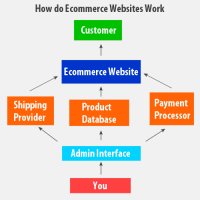Modern SEO Best Practices for Content Marketing
 Content marketing is one of the most important keys to building a successful online presence today. Without the right content in the right places at the right time, your customers will miss you. What’s more, Google will also give you a miss. However, while it’s vital that you create high quality content, you also need to follow some specific SEO best practices with that content to ensure not just visibility, but adherence to modern optimization requirements. Here’s what you need to know.
Content marketing is one of the most important keys to building a successful online presence today. Without the right content in the right places at the right time, your customers will miss you. What’s more, Google will also give you a miss. However, while it’s vital that you create high quality content, you also need to follow some specific SEO best practices with that content to ensure not just visibility, but adherence to modern optimization requirements. Here’s what you need to know.
Start with Good Content
Content quality trumps everything else, so start with the good stuff. Build your content with human readers in mind – write for your audience, not for Google’s search spiders. Remember that part of SEO is the number of shares your content gets, the amount of time your visitors spend reading your content, and how much they interact with it. Those metrics don’t depend on keyword optimization in any way whatsoever. So, focus on building high quality content first, and worry about keywords and keyword density later on.
Focus on Doing It Right
While the following considerations don’t really affect SEO so much, they will affect Google’s determination of your quality. You need to make sure that all of your content is professionally created and spell-checked, that it reads well, and that there are no blatant errors in the text. If you’re creating video content, the same thing applies, but you get a little bit of leeway as Google can’t yet parse your audio.
Content Length Matters
If there’s one thing that you need to understand, it’s that content length matters greatly in search engine optimization. This doesn’t pertain to website pages as much as it does to things like blog posts and other elements of content marketing. Google wants your content to be at least 1,000 words long, and you’ll need to maintain good quality throughout. If you choose to make your content shorter than this, you’ll most likely want to double the publishing pace so that you’re still putting out roughly 1,000 words of content at a time, just in two posts. Also, understand that it will take longer to build up a backlog of content for Google to index even if you publish this way.
Ensure SEO Is Part of Your Strategy
While you should focus on creating quality content first, you can’t forget about SEO until the very end. It needs to be part of your strategy from the beginning. You’ll need to take the same steps here as you did when creating content for your primary website pages. Namely, you’ll need to research keywords, compare them to what your competition is using, determine competition for those keywords, and more. You need to conduct research on your audience’s intent, on what problem or challenge they’re trying to overcome, and then build both content and keyword usage around those answers.
The Right Keywords Matter
As mentioned, you need to use the right keywords. Each piece of content (pages if you’re doing single pages, but documents if you’re creating longer form content like reports) should focus on a single primary keyword. This is the driving force behind the content, and could be considered the main theme or subject. You also need two to three secondary keywords per page. These relate to the primary keyword, but are different words. For instance, if your primary keyword was gardening, your secondary keywords could be things like organic gardening, pesticide-free gardening, or raised bed gardening.
Write for Personas
You’ve probably heard about buyer personas before, but they bear a little more discussion to help ensure that you really understand what they are and why they matter so much. As a business owner, it’s vital that you know your audience, and how it breaks down into subgroups. Each of those subgroups should receive a persona – a personalization that embodies the characteristics most common to the subgroup.
For instance, you might have Edna, an aging Baby Boomer who’s concerned about making her money stretch, but who believes in paying for quality products. You might have Adam, a Millennial focused on using technology to make his life simpler and easier, and Jen, a member of Generation X who is interested in avoiding unnecessary exposure to chemicals in her food, and living a more natural life.
Each of those people could be a customer of your company, but would have drastically different reasons for seeking out your products or services. You need to break your audience down into segments, identify the motivating factors for each, name them, and then write content for those personas specifically.
Vital Keyword Considerations
Content marketing can be instrumental in building your success, or it can rob you of your juice and result in reduced ranking online. If you take the wrong tack with keyword implementation, Google may think you’re trying to game the system.
Keep your keyword usage natural. Ideally, you should hit 1% density (one use of the keyword per 100 words of text), or even less if necessary. Google has gotten a lot better at indexing content based on subject, rather than keyword density, so resist the urge to keyword stuff. Nothing good can come from that.
You should also make sure that your keyword usage is organized correctly. As mentioned previously, use one primary keyword and a few secondary keywords per page, and don’t try to mix them up too much or use too many of the same keywords in multiple pieces of content.
If you follow these best practices, you’ll find that you are able to create high-quality content that delivers value to your human readers, while also giving Google something to index, and nothing to red flag your business for.




